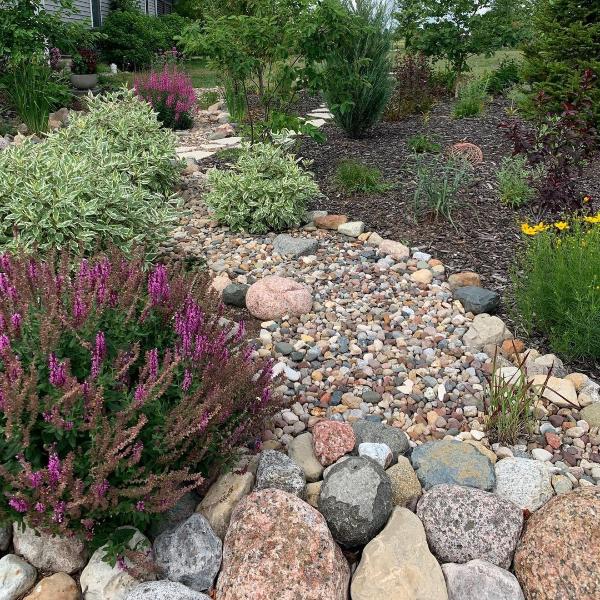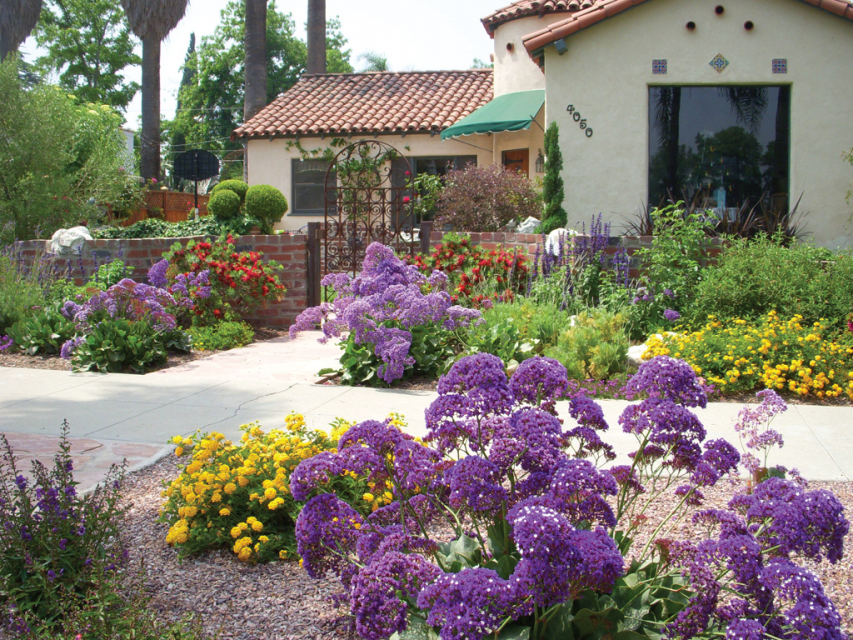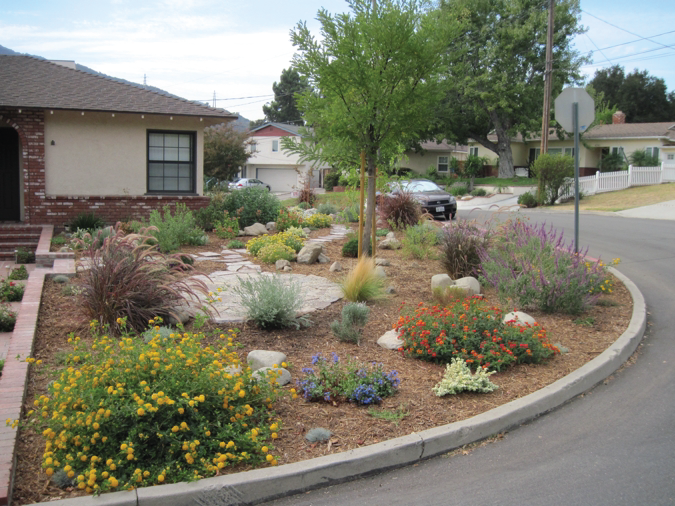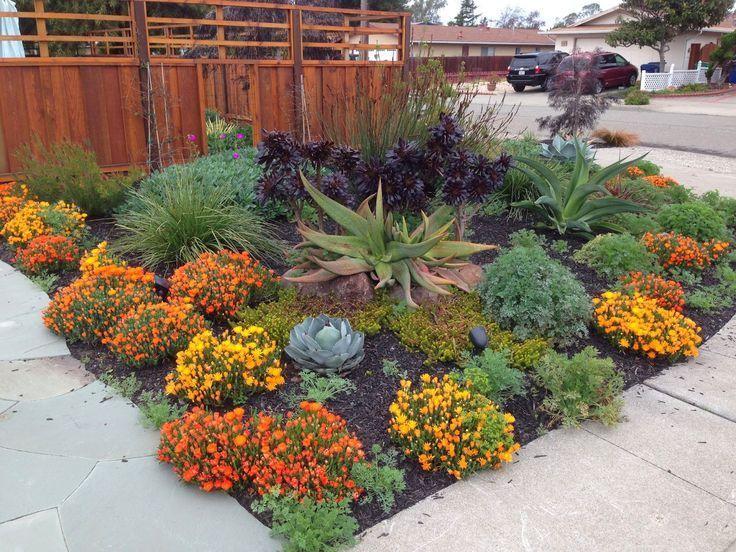Drought Tolerant Landscaping
The City of Redlands’ code requires that at least 80% of the visible front yard area be plant material. This can be plants, trees, shrubs, grass, or even synthetic turf. No more than 20% of the front yard area can be hardscape material such as decomposed granite, rock, or mulch. Click here for examples of landscapes that follow the 80/20 rule and those that do not follow the 80/20 rule..
Here are five steps to maintain a lush efficient garden that requires less water and pruning.
1. Hydrozone: group plants according to their water needs. Hydrozone your yard and garden so that low water-use and moderate water-use plants are grouped together. Also, use elevated planting beds so that plants are watered more efficiently, thereby reducing overall water usage.
2. Selecting Plants: use drought-tolerant or native plants to create a low water-use, low maintenance landscape. Calscape is a great site for plant ideas! https://calscape.org/
3. Irrigation: install micro-sprinklers, drip emitters, and weather based irrigation timers so you only give plants the amount of water they actually need.
4. Improve Your Soil: mix compost into your soil to improve its moisture retaining capability and fertility.
5. Use Mulch: place mulch around your plants, along walkways, and on top of other bare areas to reduce water use and prevent weeds.
Drought Tolerant Landscaping Resources:
https://waterwisegardenplanner.org/
https://www.ie.watersavingplants.com/
https://water.ca.gov/Water-Basics/Conservation-Tips/Removing-Your-Lawn
SoCal Yard Transformation: A Step-by-Step Guide to Get the Yard You Want,” is a book available to help homeowners achieve their full water-saving potential, “SoCal Yard Transformation,” assists customers with needed recommendations to create permanent water-use changes. The unique handbook-style guide includes easy-to-understand tips from experts, colorful images and humor.
City of Redlands water customers are eligible to receive a FREE book! Just send an email to endwaterwaste@cityofredlands.org with your name and address and we’ll mail one to you or you can pick one up at the Municipal Utilities and Engineering Department at 35 Cajon St. Suite 15A Redlands, CA. The online version is available here.
LANDSCAPES WITH A PURPOSE: RAIN GARDENS
Rain Gardens are a shallow, depressed garden that captures stormwater from from roof tops, gutters, and streets and allows it to infiltrate into the ground within 24-48 hours. The soil and sand in rain gardens are able to filter out many pollutants that come off of roof tops and streets. Also, rain gardens that are planted with native California plants require 75% less irrigation than grass lawns and can add a unique and beautiful element as an alternative to traditional grass lawns. 
Why install a rain garden? Not only do rain gardens collect water and divert it to the groundwater and help recharge the basin but they can lessen storm water runoff which flows down pavement and roadways collecting pollutants such as copper, lead, zinc, phosphorus, nitrogen, oil, grease, soil, detergents, and organic matter which then flow into storm drainage systems and into our waterways. Diverting rainwater into rain gardens not only reduces the amount of pollutants in our waterways and recharges the groundwater but can lessen the maintenance of existing city infrastructure.
Resources:
Rain Garden Calculator: Calculating rain garden size based on rainfall soil type, and slope
HOA’S AND LOW-WATER LANDSCAPES
After receiving several inquiries from community residents, the City of Redlands is
providing the above linked fact sheet with information about water use prohibitions for Home
Owners Associations (HOAs), which clarifies restrictions that apply during and in
response to a declared drought emergency and restrictions that apply when drought
conditions have not been declared. This fact sheet was developed by the State Water
Resources Control Board (SWRCB).



